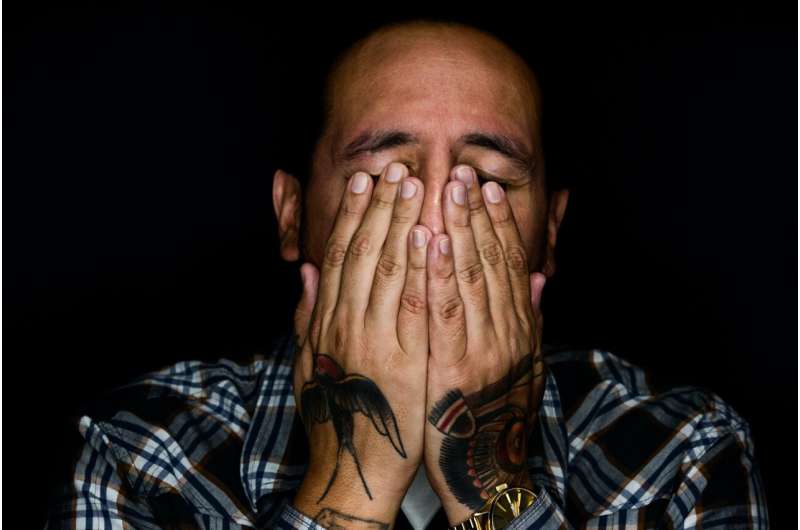This article has been reviewed according to Science X's editorial process and policies. Editors have highlighted the following attributes while ensuring the content's credibility:
fact-checked
trusted source
proofread
People with facial differences found to fare best when they disclose conditions on own terms

People with noticeable facial differences often feel compelled to explain the medical reasons behind those differences, but such involuntary disclosure may increase stigma, anxiety and depression, recent research from Oregon State University has found.
However, people who are able to disclose on their own terms, share openly and educate others about their conditions report positive outcomes like greater job satisfaction and higher self-worth.
"Facial difference" encompasses a broad spectrum of disorders, conditions, marks or injuries that are visible to others, including birthmarks, burns and scars.
Researcher Kathleen Bogart, an associate professor of psychology at OSU specializing in disability, has published two recent studies on the challenges experienced by people who feel pressure to explain their facial differences. The findings are based on both structured interviews and a larger survey of people with a variety of conditions such as port wine stain, facial paralysis and cleft lip.
"It seems that those who have very unusual conditions or are unable to hide their conditions are essentially penalized if they do not disclose openly, because other people are more likely to notice those conditions and to be curious or confused by them," Bogart said. "The people who do not disclose are really kind of breaking a social expectation."
There hasn't been much discussion in psychology about the expectation for people with facial differences to explain their medical details to anyone who asks, she said.
"We have spent a lot of time trying to understand and support people who have concealable stigmas—people who may be LGBTQ+, who may have mental health conditions—and we've spent a lot of time thinking about whether and how people might disclose, and the outcomes that come from it," Bogart said. "But it seems that psychologists and maybe the public as a whole didn't really realize that this is something that people with very obvious, visible differences contend with as well."
The studies, published in the journals Stigma and Health and Body Image, split disclosure into two broad categories: "agentic (non)disclosure," where other people dictated the terms; and "autonomous (non)disclosure," where the person was able to choose for themselves whether and how to share.
Autonomous disclosures, including people who shared their conditions indiscriminately or actively sought to educate others about their diagnoses, were associated with lower rates of anxiety and depression, as well as higher job satisfaction when it came to disclosing to employers.
Agentic disclosures included people feeling forced to explain their condition to avoid a negative reaction from others; someone else choosing to disclose on their behalf without consent; and refraining from sharing at all because others advised them not to.
Autonomous nondisclosure included individuals choosing to conceal their facial differences, avoiding social situations where they might be noticed or providing false explanations.
Forced disclosures and self-imposed nondisclosures were all associated with negative outcomes, including higher rates of anxiety, depression and public stigma and lower self-esteem. However, the studies did not determine whether these negative experiences were the cause or the result of people choosing not to disclose a condition, and the social response to that choice.
"Some of the people I spoke to felt really strongly that disclosing openly—using broadcasting as a way to educate and engage in advocacy at a social level—could ultimately change society and make it less hard for other people to disclose, or make it less expected for them to do that," Bogart said.
In the age of social media, some individuals with facial differences use their platforms to educate others and build community, but others may not even be familiar with the term "facial difference" and be able to tap into those communities for support, she said.
"The public should be aware that there is kind of a societal expectation where people feel they should have an explanation for the cause of someone else's appearance," Bogart said. "I suspect that anyone with a visible disability experiences the same conundrum around whether to disclose or not, and faces this constant expectation to explain themselves.
"For that social expectation to go away, we need large-scale social change, and that is not something that can be done on the backs of individuals with facial differences."
More information: Kathleen R. Bogart et al, "The elephant in the room": Disclosing facial differences, Stigma and Health (2022). DOI: 10.1037/sah0000430
Kathleen R. Bogart et al, Disclosing the obvious: Psychosocial implications of (not) explaining facial differences, Body Image (2023). DOI: 10.1016/j.bodyim.2023.04.009


















